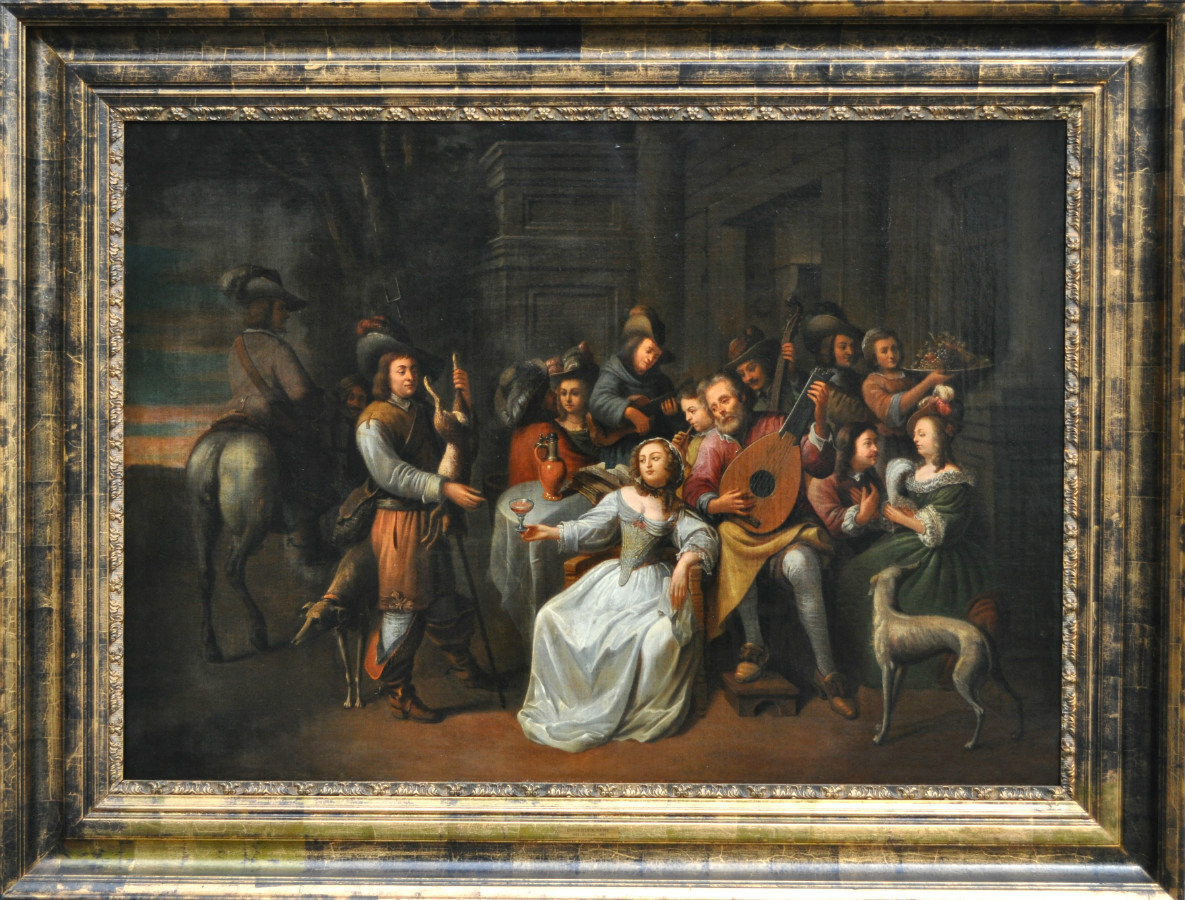The return from the hunt with an elegant company entertained by musicians
Oil on canvas : 97,3 X 138,1 cm
Signed and dated lower right “D Ryckaert/1651”
Frame :127,2 X 167,4 cm
"All paintings are fully documented with texts and photographs of comparative items. All this information is removed from our website once the painting is sold".
SOLD

